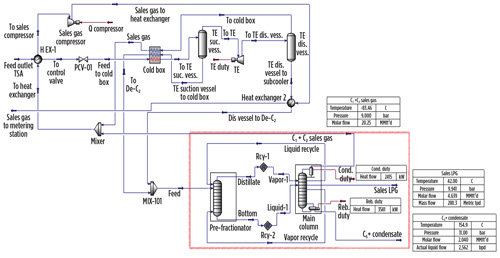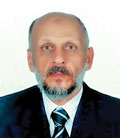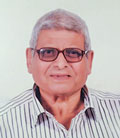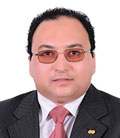Upgrade a gas plant to produce LPG by DWC and conventional methods—Part 2
M. M. Mostafa, N. A. El-Emam, M. A. El-Shafie and T. M. Aboul-Fotouh, Mining and Petroleum Engineering Department, Al-Azhar University, Cairo, Egypt
The LPG market has seen a steady increase in prices due to increasing demand for LPG worldwide, particularly for the petrochemical, automotive, metal, ceramic and glass industries. While it is possible to recover LPG in natural gas processing operations, this raises the capital and operating costs of the plant considerably. For this reason, it is important to reduce costs during these processes.
 |
|
FIG. 10. Complete process flow for the added plant with DWC simulation. The prefractionator and the main column, which collectively represent the DWC, appear in the simulation as two columns, but they will be implemented as one column in the plant. |
The divided wall column (DWC), or fully thermally coupled distillation system (FTCDS), is one of the most promising technologies to minimize energy consumption and reduce operating costs. This separation technique provides large potential energy savings compared to the conventional column method.
Part 1 of this article examined the addition of an LPG recovery plant to an existing gas plant by selecting the best of two alternative methods—the conventional approach with Petlyuk columns, or a DWC. Part 2 presents an economic study for both methods using a proprietary simulation program.a
The results indicate that using a DWC will save more than 18% of power consumption required as compared to the conventional method, thereby reducing operating costs. Moreover, using the DWC will save more than 20% of the capital costs as compared to a conventional method. Furthermore, the economic analysis shows that the respective payback periods for the conventional method and the DWC will be approximately 2.23 yr and 1.54 yr.
The authors recommend the DWC method over the conventional method to achieve energy savings in gas plants.
Results and discussion. The target of this case study was to produce LPG, using two different technologies—a DWC and a conventional method.
In the process, the feed stream exits from the temperature swing adsorption (TSA) unit and passes through the heat exchanger to reduce the temperature, and then to the cold box to further decrease the temperature to –60˚C before entering the turboexpander. The turboexpander suction vessel separate the liquids, and the pressure of the separated gas is reduced from 50.8 bar to 35.8 bar. The temperature is decreased to –76.9˚C, and the two-phase stream passes through the turboexpander discharge vessel to separate the liquid, which is condensed due to low temperature. The liquid separated in the turboexpander suction vessel mixes with the liquid separated from the turboexpander discharge vessel to enter the first-tower deethanizer in the conventional system, or the DWC directly.
Two heat exchangers were added to the modification to save the power for cooling the feed. One of them is used to exchange the hot temperature of the feed with the low temperature of the sales gas exiting from the turboexpander discharge vessel, which is mixed with the gas exiting from the top of the deethanizer (De-C2). The second heat exchanger is used to exchange the hot temperature of the sales gas stream exit from the sales gas booster compressor and the cold stream exit from the bottom of the turboexpander discharge vessel. Table 7 contains the data obtained for the two methods.
 |
The biggest impact on operating cost is the reboiler/condenser duty.12,13 The results show that the total duty of the DWC system is 18% lower than the total duty of the conventional system, which means that the DWC system will save about 18% of the operating cost.
The total number of column trays in two towers in the conventional method is 58 trays—22 trays in the first-column deethanizer (De-C2) and 36 trays in the second-column debutanizer (De-C4). Depending on the data obtained from column sizing by the simulation program,a the total height of the two columns in the conventional method is 39.528 m; the heights of the deethanizer (De-C2) and debutanizer (De-C4) are 14.64 m and 24.888 m, respectively. The total height of the DWC is 36.6 m.
The total diameter of the two columns in the conventional method is 3.504 m; the diameters of the deethanizer (De-C2) and the debutanizer (De-C4) are 1.98 m and 1.524 m, respectively. The diameter of the DWC is 3.048 m. Depending on this calculation, the DWC will save more than 39% of the area required to build two conventional towers in series and to connect the piping systems of the columns.
In the conventional method, the LPG recovered is 276.2 metric tpd and the recovered condensate is 2,502 bpd. In the DWC, the recovered LPG is 280.4 metric tpd and the recovered condensate is 2,562 bpd.
Cost estimation. Total capital and operating costs are obtained using the simulation system’sa economic analyzer, which calculates capital and utility costs for cryogenic equipment and both LPG recovery methods.16 Table 8 illustrates the capital cost, the operating cost and the total investment for both methods. Table 9 illustrates the profits obtained from the added plant compared with the original plant.
 |
Fixed capital cost includes purchased equipment delivered, purchased equipment installation, installed instrumentation and controls, piping construction and installation, installed electrical systems, building construction and services, yard improvements, installed services facilities, engineering and supervision, construction expenses, legal expenses, contractor services, and fee and contingency.12,13 Operating cost includes the raw materials, utility cost, maintenance cost and labor cost.7,12,13
For a conventional arrangement method, the total capital cost and operating cost are $241,326,875 and $37,285,002, respectively. For the DWC method, the capital cost and operating cost are $192,023,725 and $23,734,132, respectively.7,13 Total investment is $248,566,681 for the conventional method and $197,784,437 for the DWC method.23
Total net income for the conventional method is less than the total net income for the DWC method. The payback period for the conventional method equals 2.23 yr, while the DWC payback period is 1.54 yr (Table 10).23
 |
Recommendations. This study sought to produce LPG from recovered NGL by adding a cryogenic plant to recover the NGL from natural gas. Two alternative methods were studied to produce LPG—the conventional method and the DWC method.
Study results showed that using the DWC method will save more than 18% of the power consumption required as compared to the conventional method, thereby reducing the operating cost. Moreover, using the DWC will save more than 20% of the capital cost as compared to a conventional method.
The authors recommend using the DWC method over the conventional method to achieve energy savings in the gas plant. GP
Notes
aAspen HYSYS
Literature cited
- Campbell, J. M., L. Lilly and R. Maddox, “Gas conditioning and processing,” Vol. 3, Iss. 2, PennWell Conferences and Exhibitions, Houston, Texas, November 1999.
- Park, J. H., M. S. Khan, R. Andika, M. Getu, A. Bahadori and M. Lee, “Techno-economic evaluation of a novel NGL recovery scheme with nine patented schemes for offshore applications,” Journal of Natural Gas Science and Engineering, Vol. 27, 2015.
- Wang, X. and M. Economides, Advanced Natural Gas Engineering, Elsevier, 2013.
- Younger, A. H. and P. Eng, “Natural gas processing principles and technology—Part 1,” Gas Processors Association, Tulsa, Oklahoma, 2001.
- Shelley, C., “The story of LPG,” Poten & Partners, 2003.
- Mokhatab, S. and W. A. Poe, Handbook of natural gas transmission and processing, Gulf Professional Publishing, 2012.
- Raheem, A. B., A. Hassan, S. A. Samsudin, Z. Z. Noor and A. Adebobajo, “Comparative economic investigation options for liquefied petroleum gas production from natural gas liquids,” American Journal of Chemical Engineering, Vol. 3, Iss. 2, 2015.
- “Engineering Data Book,” Gas Processors Suppliers Association, Vol. 2, 2004.
- Navarro‐Amorós, M. A., R. Ruiz‐Femenia and J. A. Caballero, “A new technique for recovering energy in thermally coupled distillation using vapor recompression cycles,” AIChE Journal, Vol. 59, Iss. 10, 2013.
- Gómez‐Castro, F. I., J. G. Segovia‐Hernández, S. Hernandez, C. Gutiérrez‐Antonio and A. Briones‐Ramírez, “Dividing wall distillation columns: Optimization and control properties,” Chemical Engineering & Technology, Vol. 31, Iss. 9, 2008.
- Ching, T. C., J. Nandong and M. Getu, “Retrofitting options for natural gas liquid (NGL) fractionation trains using the concept of single column development,” Procedia Engineering, Vol. 148, 2016.
- Kumar, R. P., “Retrofitting industrial, conventional column systems to Petlyuk/divided wall columns,” Doctoral dissertation, 2008.
- Khabibullin, E., F. Febrianti, J. Sheng, S. Bandyopadhyay and S. Skogestad, “TKP4170 process design project,” 2010.
- Long, N. V. D., L. Q. Minh, F. Ahmad, P. Luis and M. Lee, “Intensified distillation‐based separation processes: Recent developments and perspectives,” Chemical Engineering & Technology, Vol. 39, Iss. 12, 2016.
- Nguyen, T. D., “Conceptual design, simulation and experimental validation of divided wall column: Application for non-reactive and reactive mixture,” Doctoral dissertation, 2015.
- Halvorsen, I. J., I. Dejanović, S. Skogestad and Ž. Olujić, “Internal configurations for a multi-product dividing wall column,” Chemical Engineering Research and Design, Vol. 91, Iss. 10, 2013.
- Le, Q. K., “Design and simulation of dividing wall column for ternary heterogeneous distillation,” Master’s thesis, Norwegian University of Science and Technology, 2014.
- Rangaiah, G. P., E. L. Ooi and R. Premkumar, “A simplified procedure for quick design of dividing wall columns for industrial applications,” Chemical product and process modeling, Vol. 4, Iss. 1, 2009.
- Abdulrahman, R. K., M. H. Zangana and I. M. Sebastine, “Optimal NGL recovery from natural gas using turboexpander: A case study and simulation,” Chemistry and Technology of Fuels and Oils, Vol. 51, Iss. 5, 2015.
- Abdulrahman, R. K., M. H. Zangana and I. M. Sebastine, “Optimal NGL recovery from natural gas using turboexpander: A case study and simulation,” Chemistry and Technology of Fuels and Oils, Vol. 51, Iss. 5, 2015.
- Kiss, A. A., “Advanced distillation technologies: Design, control and applications,” John Wiley & Sons, Hoboken, New Jersey, 2015.
- Mustafa, M. and J. A. Wilson, “An approach towards the design of a Petlyuk column using HYSYS,” Sudan Engineering Society Journal, Vol. 58, No. 1, March 2012.
- Omran, H. R., S. M. El-Marsafy, F. H. Ashour and E. F. Abadir, “Economic evaluation of aromatics production, a case study for financial model application in petrochemical projects,” Egyptian Journal of Petroleum, 2016.
- Aspen Technology, “Thermodynamics COM interface,” Aspen HYSYS, Version 8.3.
 |
Mohamed Mohamed Mostafa is an Operational and Gas Processing Engineer at Rashid Petroleum Co. in Egypt. He is responsible for operating gas and oil plants, including shutdown and startup, design and maintenance of mechanical isolation/de-isolation, storage and loading of condensate, etc. He also oversees the management and operation of subsea wells, and served as Commissioning and Startup Engineer for an extension of the Torus Libra project. He holds a BSc degree in petroleum engineering from Al-Azhar University.
 |
Nour Ahmed El-Emam is a Professor of Petroleum Engineering in the Mining and Petroleum Engineering Department at Al-Azhar University in Cairo, Egypt.
He has published more than 60 papers in petroleum engineering publications and at international conferences. Furthermore, he has supervised more than 20 PhD and MSc candidates in petroleum engineering. Dr. Nour holds a PhD in petroleum engineering from the Technical University of Heavy Industries in Hungary.
 |
Masoud A. El-Shafee is an Emeritus Associate Professor of Petroleum Engineering in the Mining and Petroleum Engineering Department at Al-Azhar University. He specializes in petroleum refining engineering, petrochemical technology and natural gas processing. In addition, he has published many articles in petroleum refining and engineering and gas processing technology publications.
 |
Tarek M. Aboul-Fotouh is an Associate Professor of Petroleum Engineering in the Mining and Petroleum Engineering Department at Al-Azhar University; an Associate Professor in the Chemical Engineering Department at the British University in Egypt; and an Associate Professor in the Petroleum Engineering Department at the Future University in Egypt. Dr. Aboul-Fotouh has published more than 30 articles on petroleum refining engineering and fuel technology, and is also a member of the Society of Petroleum Engineers (SPE) and the American Institute of Chemical Engineers (AIChE). Dr. Aboul-Fotouh holds a PhD in chemical engineering from Azerbaijan State Oil Academy in Baku, Azerbaijan.




Comments